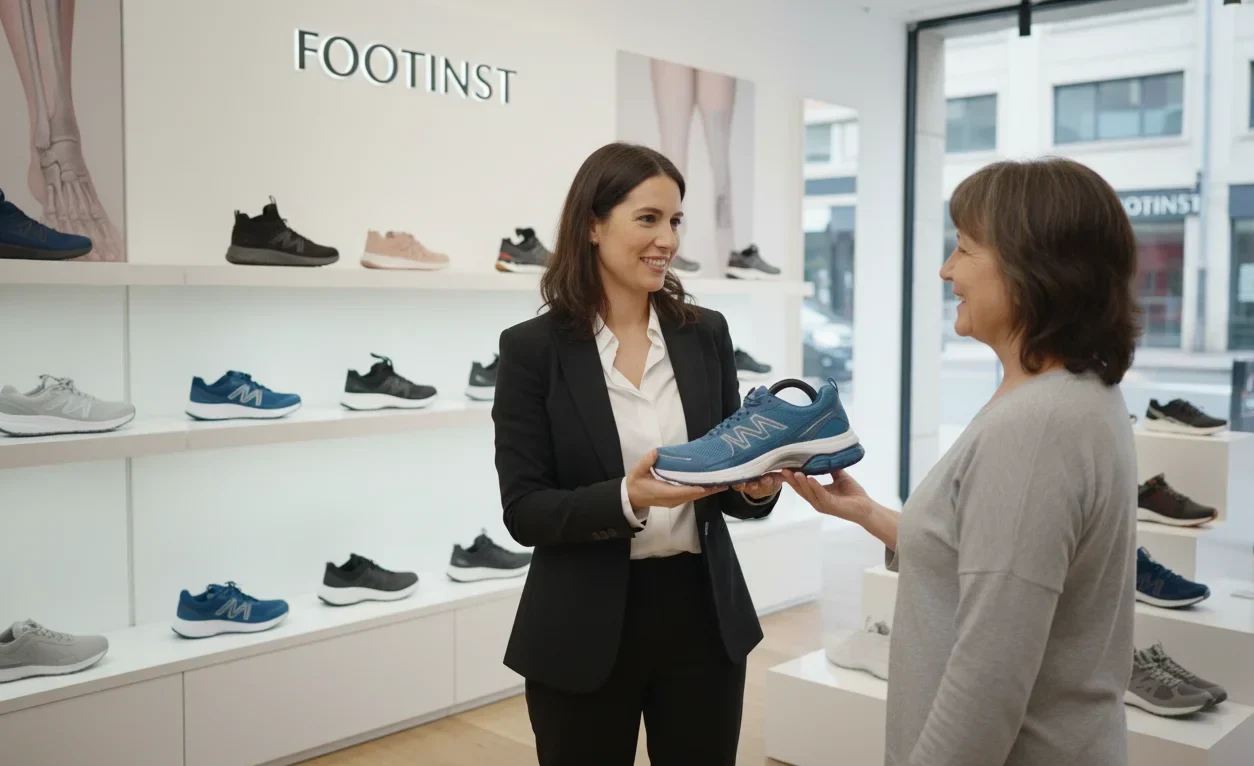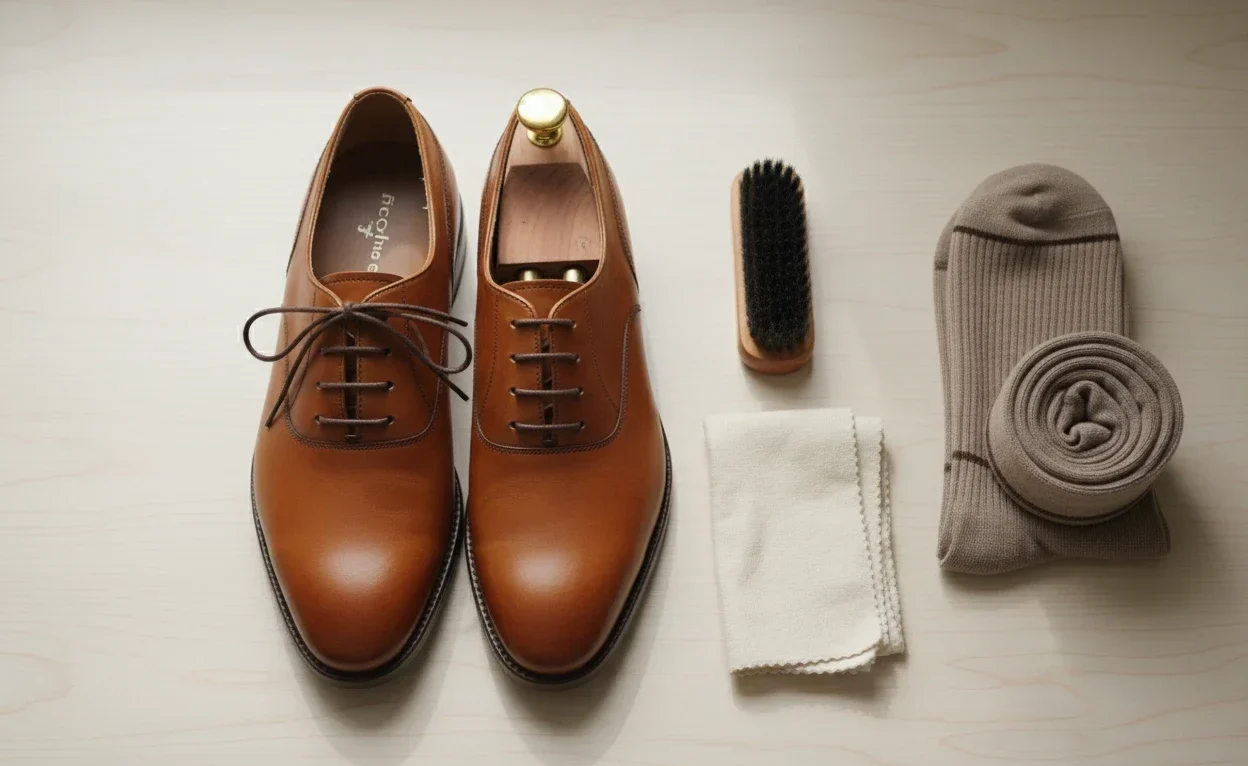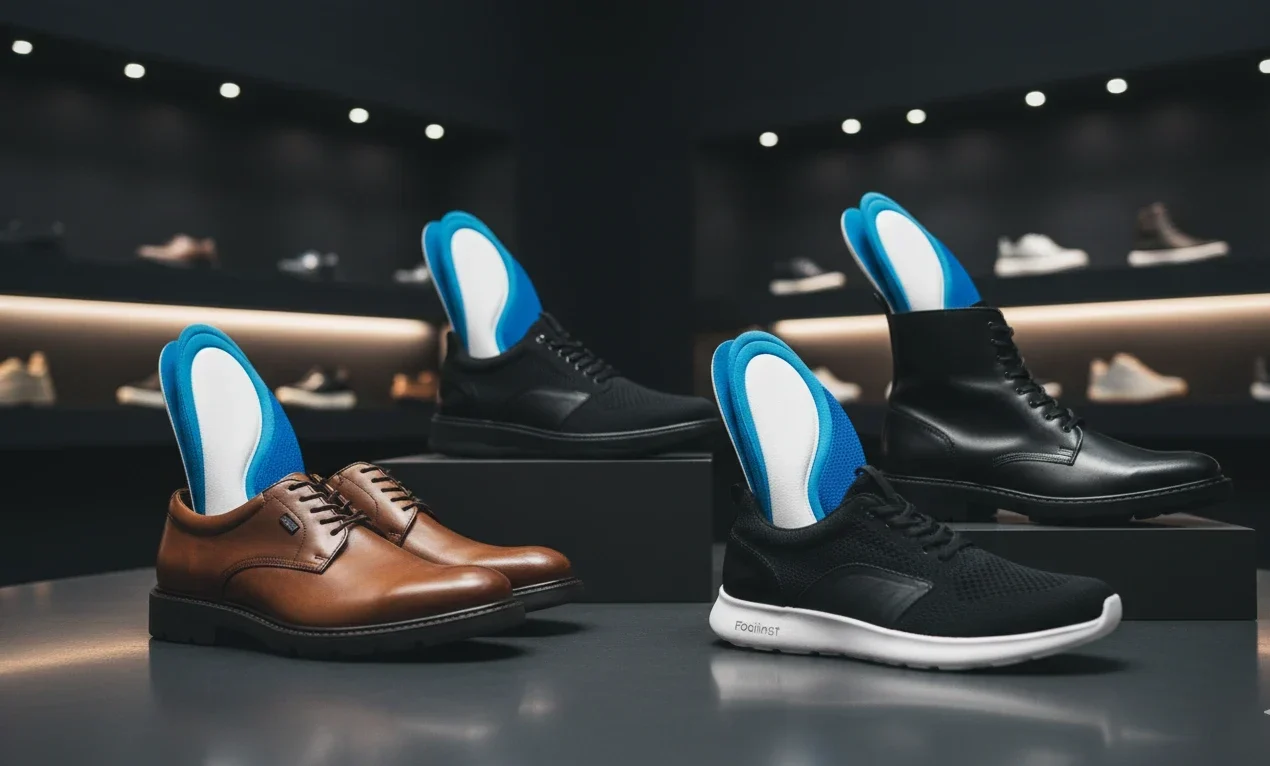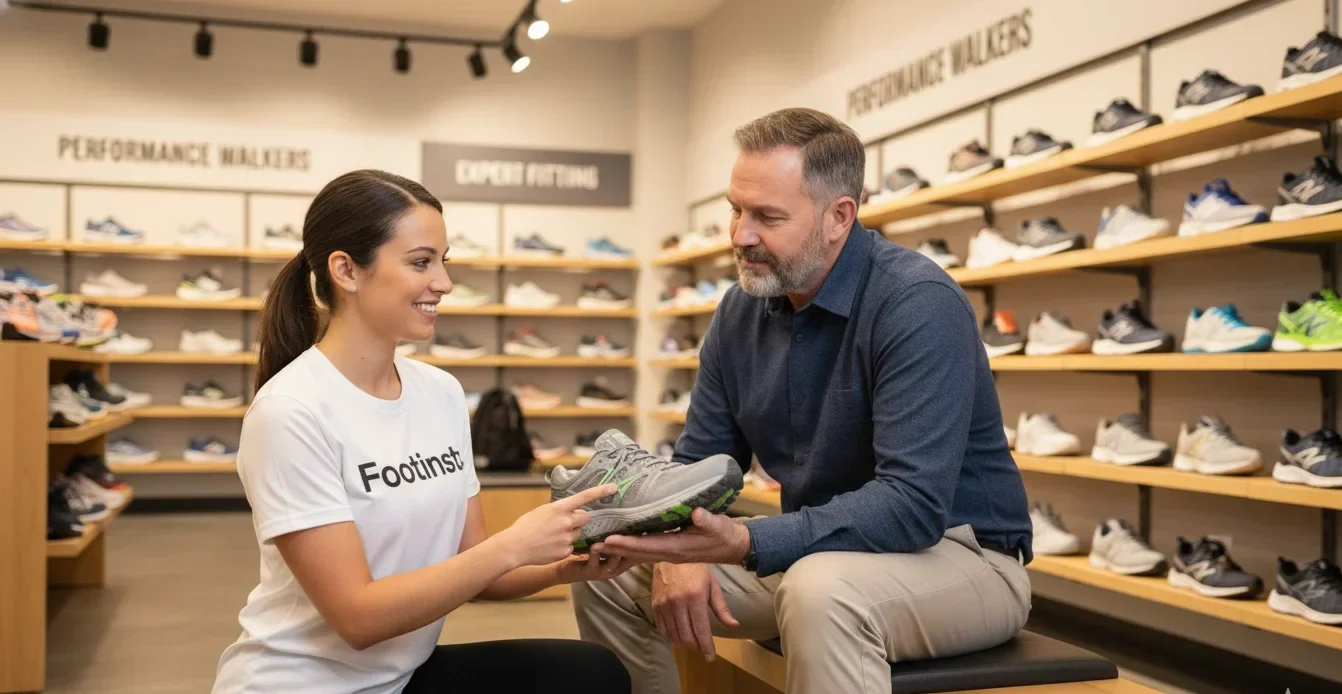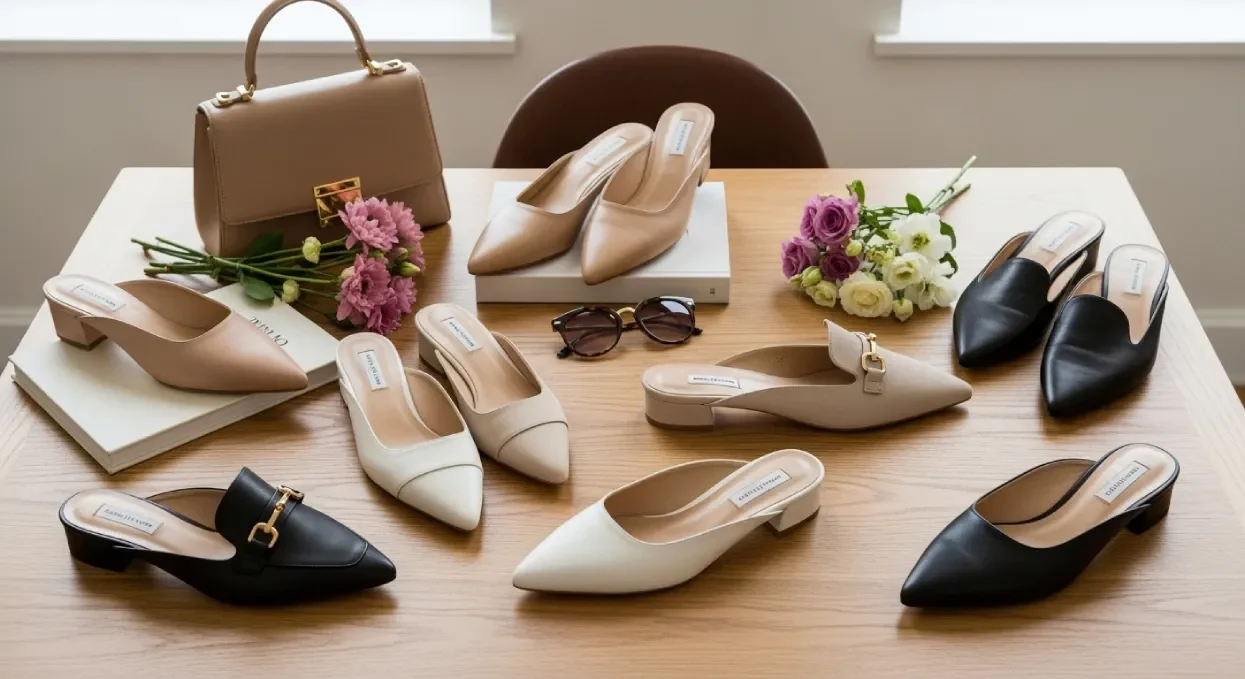How to Stretch Tight Shoes at Home – Expert Hacks for a Perfect Fit
Your Shoes Feel Too Tight – Common Causes & Solutions
Nothing is more frustrating than slipping on a brand-new pair of shoes, only to find them painfully tight. Many shoe lovers face this problem, and it’s not always because of poor sizing. Understanding why shoes feel tight can help you stretch them safely at home and prevent foot discomfort.
How to Stretch Tight Shoes at Home – Expert Hacks for a Perfect Fit
Even a well-made pair of shoes can feel tight — and that discomfort often starts from a simple issue: fit. Below are the most common reasons shoes feel too snug and why learning safe home-stretching methods saves time and money while avoiding blisters and long-term foot problems.
Common Causes of Tight Shoes
-
Incorrect Size or WidthMany shoppers pick shoes by length only. Narrow widths pinch toes and create hot spots.
-
New Shoes That Need Breaking InLeather, suede and some synthetics are stiff at first and often need gentle stretching to mold to your foot.
-
Swelling of FeetFeet swell during the day, especially after long walks or in heat — shoes that fit in the morning may be tight by evening.
-
Design FactorsPointed toes, slim profiles, or high arches can cause discomfort even when length feels right.
-
Socks or InsertsThick socks or added insoles reduce interior space and make shoes feel snug.
By knowing these causes, you can safely choose the right stretching method. In the next sections, we’ll cover material-specific solutions and step-by-step guides to make your shoes comfortable at home.
Know Your Kicks – Material Matters
Before you start stretching your shoes at home, it’s crucial to know what material your kicks are made of. Different materials respond differently to stretching methods. Using the wrong approach can damage your shoes permanently. Here’s a practical guide:
Know Your Kicks – Material Matters
Before you start stretching your shoes at home, it’s crucial to know what material your kicks are made of. Different materials respond differently to stretching methods. Using the wrong approach can damage your shoes permanently. Here’s a practical guide:
1. Leather Shoes – Flexible Yet Sturdy
- Properties: Durable, slightly elastic, molds to your foot over time.
- Stretching Tips:
- Can handle heat-based stretching (hairdryer + thick socks).
- Leather stretching sprays or creams help soften fibers.
- Avoid excessive water – it can warp leather.
- Best For: Dress shoes, formal boots, classic sneakers.
2. Suede Shoes – Delicate & Stylish
- Properties: Soft, velvety texture; less elastic than leather.
- Stretching Tips:
- Use dedicated suede stretching sprays.
- Avoid soaking or using too much heat.
- Gentle manual stretching or shoe stretchers work best.
- Best For: Casual boots, trendy shoes, fashion sneakers.
3. Synthetic Shoes – Modern & Lightweight
- Properties: Made from man-made materials; less breathable but easy to clean.
- Stretching Tips:
- Can tolerate gentle heat and stretching.
- Avoid extreme stretching that can crack materials.
- Household hacks (socks + hairdryer) usually work well.
- Best For: Sports shoes, budget-friendly shoes, everyday casual kicks.
4. Canvas & Fabric Shoes – Soft and Flexible
- Properties: Lightweight, breathable, stretches naturally with wear.
- Stretching Tips:
- Usually need minimal stretching.
- Damp newspaper or thick socks can gently expand tight areas.
- Avoid high heat – can weaken glue or stitching.
- Best For: Sneakers, casual summer shoes, slip-ons.
Check Before You Stretch – Foot & Shoe Measurements
Stretching your shoes at home can be very effective—but only if you know whether your shoes really need stretching. Overstretching or unnecessary methods can damage your favorite kicks. Here’s how to check properly.
Check Before You Stretch – Foot & Shoe Measurements
Stretching your shoes at home can be very effective—but only if you know whether your shoes really need stretching. Overstretching or unnecessary methods can damage your favorite kicks. Here’s how to check properly.
Step 1: Measure Your Feet Accurately
- Length: Place your foot on paper and trace it. Measure from heel to tip of longest toe.
- Width: Measure the widest part of your foot (ball area). Compare with your shoe’s width (standard, wide, or narrow).
- Arch Height: High arches may require more room or specific stretching in the middle section.
Step 2: Check Shoe Fit
- Walk Around: Wear the shoes and walk on a flat surface.
- Pressure Points: Note areas that pinch, rub, or cause discomfort.
- Toe Space: Ensure your toes aren’t cramped—there should be a thumb-width space at the front.
Step 3: Identify Problem Zones
- Heel: Blisters indicate tight heel area.
- Ball of Foot: Pinching means the shoe may be narrow or stiff here.
- Toe Box: Cramped toes suggest stretching is needed.
Step 4: Decide if Stretching is Necessary
- Shoes that feel tight only in some areas can be stretched selectively.
- Shoes that are too small overall may need a size replacement instead of stretching.
Quick Home Tricks to Loosen Tight Shoes
Sometimes, you don’t need fancy tools or professional help. Simple home tricks can make your shoes comfy in no time. Here are the most effective methods used by shoe experts worldwide.
Home Shoe Stretching Methods – Step-by-Step Guide
Tight shoes can be uncomfortable, but with safe home methods, you can gently stretch them for a perfect fit. Follow these expert-approved techniques for different shoe materials.
Sock & Heat Method
Best For: Leather, synthetic shoes.
- Wear thick socks over your bare feet.
- Put on the tight shoes.
- Use a hairdryer on medium heat and warm the tight areas for 30–60 seconds.
- Flex your feet and move around in the shoes while still warm.
- Remove shoes, keep socks on, and let shoes cool naturally.
Why It Works: Heat softens shoe material, while your foot shape molds it gently.
Pro TipFrozen Water Method
Best For: Leather and synthetic boots.
- Fill resealable plastic bags with water (half-full).
- Insert the bags into the shoes, ensuring they reach tight spots.
- Place shoes in the freezer overnight.
- Water expands as it freezes, stretching the shoes gradually.
Caution: Avoid thin or delicate shoes—plastic bag leaks may damage interiors.
Shoe Stretching Sprays & Creams
Best For: Leather, suede, or synthetic shoes.
- Apply shoe stretching spray to tight areas.
- Wear the shoes immediately, or use a shoe stretcher for targeted expansion.
- Leave shoes on for 20–30 minutes, then remove.
Tip: Always test spray on a small hidden area first to avoid discoloration.
Combined Methods for Tough Shoes
- Use spray + sock & heat for extra stubborn tight spots.
- For boots, frozen water method + leather conditioner after stretching improves softness.
– 20+ Year Shoe Retail Specialist
Leather Shoe Stretching Step-by-Step
Leather shoes are elegant and durable, but they can feel stiff or tight when new. With the right approach, you can stretch them at home safely and make them instantly more comfortable.
Step-by-Step Leather Shoe Stretching Guide
Stretching leather shoes at home requires care, patience, and the right methods. Follow these expert-approved steps for a perfect, comfortable fit.
Step 1: Clean Your Leather Shoes
- Wipe off dust and dirt with a soft, damp cloth.
- Remove laces to avoid uneven stretching.
- Why: Clean leather absorbs stretching sprays and heat more evenly.
Step 2: Apply Leather Stretching Spray or Cream
- Focus on the tightest areas, like the toe box or heel.
- Spray or dab a thin layer, avoiding over-saturation.
- Wait 1–2 minutes for the leather to soften.
- Tip
Step 3: Wear Thick Socks
Put on two pairs of socks for extra bulk and wear your shoes to create pressure in tight zones.
Step 4: Heat Method
- Use a hairdryer on medium heat.
- Move it 5–10 cm away from the leather.
- Focus on tight areas for 30–60 seconds while flexing your feet.
- Why: Heat softens leather fibers, allowing them to mold to your foot shape.
Step 5: Walk and Flex
Walk around indoors for 10–15 minutes while the leather is warm. Flex your toes and press tight areas with your hands if needed.
Step 6: Cool Down
Remove shoes and let them cool naturally. Leather will retain the new stretched shape once it cools.
Step 7: Repeat If Necessary
For stubborn areas, repeat 2–3 times, but avoid excessive stretching to prevent damage.
Optional: Use a Leather Shoe Stretcher
- Insert a wooden or adjustable shoe stretcher into the shoe.
- Expand gently and leave for 4–6 hours or overnight.
- Especially useful for heels, toe boxes, and wide spots.
– 20+ Year Shoe Specialist
Suede Shoes? Stretch Without Ruining Them
Suede shoes are stylish, soft, and trendy—but their delicate texture requires extra care when stretching. The wrong approach can leave stains, marks, or deform the material.
Here’s how to make your suede kicks comfortable at home safely.
Suede Shoe Stretching: Step-by-Step Expert Guide
Suede requires delicate handling. Follow these gentle, proven methods to make your suede shoes comfortable without damaging the material.
1. Identify the Tight Zones
- Common areas: toe box, heel, and instep.
- Gently press your fingers on the suede to locate pinch points.
2. Use Suede Stretching Sprays
- Choose a spray specifically designed for suede.
- Apply lightly on tight areas—do not soak.
- Wait 1–2 minutes for the material to soften.
- Tip
3. Use Thick Socks or Foam Inserts
Wear one or two thick socks, then put on the shoes. Move and flex your feet for 5–10 minutes. This gradually molds the suede without applying too much pressure.
4. Gentle Manual Stretching
Use your hands to carefully pull and flex tight areas. Avoid stretching aggressively; apply even, slow pressure.
5. Use a Suede-Friendly Shoe Stretcher
- Adjustable shoe stretchers work best for toe boxes and mid-foot.
- Expand gradually and leave for 4–6 hours or overnight.
- Suede holds shape well if pressure is even and slow.
6. Avoid Heat & Water
- Never use high heat (hairdryer) or water directly on suede.
- Excessive heat or moisture can shrink or discolor suede.
– Shoe Retail Specialist
DIY Shoe Stretchers – Your Home Solution
Sometimes home hacks aren’t enough, and a DIY shoe stretcher can be your best friend. These tools allow targeted, even stretching without damaging your shoes.
Types of DIY Shoe Stretchers
| Type | Best For | Key Features |
|---|---|---|
| Single-Point Stretchers | Tight toe box or bunion areas | Small, adjustable knob to expand one area |
| Two-Way Stretchers | Whole shoe | Expands length and width simultaneously |
| Heel Stretchers | Pinching heels | Focused pressure for back of shoe |
| Boot Stretchers | High boots or ankle boots | Tall design, expands calf and foot area |
How to Use a Shoe Stretcher
- Clean Shoes: Remove dirt, dust, and laces.
- Insert Stretcher: Place it gently inside the shoe.
- Adjust Slowly: Turn knobs or levers gradually to expand tight zones.
- Leave in Place: For 4–6 hours or overnight for optimal stretching.
- Check Progress: Remove and try on the shoes; repeat if needed.
Safety Tips
- Never over-stretch – apply gradual pressure only.
- Use stretchers suitable for your shoe material (leather, suede, synthetic).
- Avoid using stretchers on thin or delicate shoes that may deform easily.
Extra Expert Advice
“DIY shoe stretchers are the most reliable home tool for precise stretching. They prevent uneven stretching, especially for high-quality leather or designer shoes.” – Experienced Shoe Retailer
Household Items That Can Save Your Feet
Not every tight shoe problem needs a professional tool. Many common household items can help you stretch shoes comfortably at home. Safe, budget-friendly, and surprisingly effective.
-
Thick Socks
Wear one or two thick pairs of socks and put on tight shoes. Walk indoors for 10–15 minutes while flexing your feet. Works best with leather, synthetic, and casual sneakers. Pro Tip: Combine with gentle heat using a hairdryer. -
Hairdryer
Wear thick socks and shoes, then heat tight areas with hairdryer for 30–60 seconds. Heat softens shoe material while molding to foot shape. Keep 5–10 cm distance to prevent damage. -
Newspaper or Paper Stuffing
Wet slightly, crumple, and stuff inside shoes overnight to gently expand. Best for canvas, fabric, or soft leather. Avoid over-soaking, especially suede. -
Plastic Bags & Water (Freezing)
Fill resealable bags half-full with water, place inside shoes, and freeze overnight. Expands gradually. Best for leather or sturdy synthetic boots. Avoid fragile shoes. -
Rolling Pin or Smooth Bottle
Use to gently press or roll tight areas of soft shoes. Roll slowly and evenly to prevent creases.
“Household hacks are surprisingly effective for daily shoe stretching. Always focus on tight zones and combine methods gently for the best results.” – Shoe Retail Expert
Household Items That Can Save Your Feet
Not every tight shoe problem needs a professional tool. Many common household items can help you stretch shoes comfortably at home. These are safe, budget-friendly, and surprisingly effective.
Household Items That Can Save Your Feet
Not every tight shoe problem needs a professional tool. Many common household items can help you stretch shoes comfortably at home. These are safe, budget-friendly, and surprisingly effective.
1. Thick Socks
- How to use: Wear one or two thick pairs of socks and put on tight shoes.
- Method: Walk around indoors for 10–15 minutes while gently flexing your feet.
- Best for: Leather, synthetic, and casual sneakers.
- Pro Tip: Works best combined with gentle heat using a hairdryer.
2. Hairdryer
- How to use: Put on thick socks and your shoes, then heat tight areas with a hairdryer for 30–60 seconds.
- Why it works: Heat softens shoe material while your foot shape molds it.
- Safety: Keep a distance of 5–10 cm from the shoe and avoid high heat to prevent damage.
3. Newspaper or Paper Stuffing
- How to use: Wet newspaper slightly, crumple it, and stuff inside the shoes.
- Method: Leave overnight to expand the shoe gently as paper dries.
- Best for: Canvas, fabric, or soft leather shoes.
- Caution: Don’t over-soak paper, especially in delicate suede.
4. Plastic Bags & Water (Freezing Method)
- How to use: Fill resealable bags half-full with water and place inside shoes. Freeze overnight.
- Effect: Water expands, stretching shoes gradually.
- Best for: Leather or sturdy synthetic boots.
- Caution: Avoid thin or fragile shoes to prevent cracking or leaks.
5. Rolling Pin or Smooth Bottle
- How to use: Use to gently press or roll tight areas of soft shoes (like fabric sneakers).
- Tip: Roll slowly and evenly to prevent creases.
Expert Advice
“Household hacks are surprisingly effective for daily shoe stretching. Always focus on tight zones and combine methods gently for the best results.” – Shoe Retail Expert
Preventing Shoes from Feeling Tight Again
Stretching shoes at home is great, but the real key is preventing tightness from coming back. With a few expert tips, you can keep your kicks comfy for the long term.
Tips to Prevent Tight Shoes
Keeping your shoes comfortable starts with the right habits. Follow these expert tips to prevent tightness before it becomes a problem.
1. Choose the Right Fit From the Start
- Always measure your feet before buying new shoes.
- Consider both length and width; many brands have narrow, medium, and wide sizes.
- Tip: Try shoes on at the end of the day when your feet are slightly swollen.
2. Break-In New Shoes Gradually
- Wear new shoes for 1–2 hours at a time initially.
- Increase wear duration slowly to allow the material to mold to your feet.
- Avoid forcing tight shoes immediately.
3. Use Cushioned Insoles
- Adds comfort and can prevent pinching in tight areas.
- Can also redistribute pressure in high-arch or narrow shoes.
- Tip: Removable insoles allow you to adjust fit over time.
4. Keep Shoes Dry & Conditioned
- Leather shoes need regular conditioning to maintain flexibility.
- Avoid damp conditions which can make shoes stiff.
- Suede care: Use a suede brush and dedicated spray to maintain softness.
5. Rotate Your Shoes
- Wearing the same pair every day causes tight spots to form faster.
- Rotate at least 2–3 pairs to allow shoes to regain shape.
6. Adjust Socks & Laces
- Thick socks can help in winter; thin socks for summer.
- Loosen laces slightly at tight areas to relieve pressure without changing shoe shape.
Expert Tip
“Preventing tightness is easier than fixing it. Proper fit, gradual break-in, and regular care keep your shoes comfortable for years.” – Experienced Shoe Retailer
When to Call a Professional Cobbler
Some shoes are too valuable, delicate, or stubborn for home stretching. Knowing when to seek professional help saves both your kicks and your patience.
When to See a Cobbler
-
Signs You Need a Cobbler
Persistent tightness in the toe box or heel despite home stretching. Cracks, creases, or damage forming in leather or suede. Designer or expensive shoes that you don’t want to risk. High boots or shoes with intricate stitching or embellishments. -
Benefits of Professional Stretching
Uses specialized tools to target exact areas. Ensures even and safe stretching without deforming shoes. Experts can also adjust shoe width or add padding for ultimate comfort. -
Common Mistakes to Avoid
Forcing shoes with extreme heat or ice. Overstretching with DIY methods repeatedly. Ignoring tightness in new or premium shoes. -
Cost vs. Value
Professional stretching is usually affordable and protects your investment. Think of it as long-term comfort insurance, especially for high-quality or leather shoes.
“Home methods are effective for everyday shoes. But for delicate, expensive, or tricky pairs, a professional cobbler ensures comfort without damaging your kicks.” – Shoe Specialist with 20+ Years Experience
Family-Friendly Tips – Kids & Sensitive Feet
Stretching shoes at home isn’t just for adults. Kids, teenagers, and people with sensitive feet need extra care to avoid discomfort or injury. Here’s how to make it safe and effective for the whole family.
Family-Friendly Shoe Stretching Tips
-
Kids’ Shoes – Gentle & Safe
Measure regularly: Kids’ feet grow quickly; check size every 2–3 months.
Minimal stretching: Only use soft socks or gentle manual stretching.
Avoid heat or ice methods: High temperatures can damage soft kids’ shoes.
Tip: Focus on comfort, not stretching to “fit them longer” — tight shoes can affect foot development. -
Sensitive Feet – Elderly or Foot Issues
People with bunions, diabetes, or plantar issues need extra caution.
Use soft shoe stretchers or gentle stretching sprays.
Always test a small area first and avoid aggressive home methods.
Tip: Wear cushioned socks to prevent rubbing during stretching. -
Family Routine for Shoe Comfort
Rotate shoes daily to prevent pressure spots.
Keep shoes clean, conditioned, and dry.
Teach kids and elderly family members simple comfort hacks, like loosening laces or using thick socks temporarily.
“When stretching for kids or sensitive feet, patience and gentleness are key. Comfort should always come before aesthetics or size adjustment.” – 20+ Year Shoe Retail Expert
Wrap-Up – Enjoy Comfy Shoes Every Day
Stretching tight shoes at home is a simple but highly effective skill. With the right knowledge, you can make almost any shoe comfortable while protecting its quality. Here’s a quick recap of what we’ve covered:
Key Takeaways – Shoe Stretching
- ● Understand Your Shoes: Different materials (leather, suede, synthetic, canvas) require specific stretching methods.
- ● Measure Before Stretching: Always check your foot size, shoe width, and tight zones first.
- ● Use Safe Home Methods: Thick socks, hairdryer, frozen water, or household items can help loosen shoes gently.
- ● DIY Shoe Stretchers: Great for precise, even stretching, especially for leather or expensive shoes.
- ● Professional Help When Needed: Cobbler services are invaluable for delicate, high-end, or stubborn shoes.
- ● Prevent Future Tightness: Rotate shoes, use insoles, break in gradually, and maintain material care.
- ● Family-Friendly Stretching: Kids and sensitive feet require extra caution and gentleness.
“Comfortable shoes are not just about size—they’re about care, patience, and using the right techniques. A little effort at home keeps your shoes cozy, your feet healthy, and every step enjoyable.” – Shoe Specialist with 20+ Years Experience
FAQ – Shoe Stretching at Home
Most leather, suede, synthetic, and canvas shoes can be stretched carefully. Delicate or very thin shoes may require professional help to avoid damage.
Simple methods (thick socks, hairdryer) can take 10–30 minutes for noticeable relief. Stubborn shoes may require overnight stretching or repeated sessions.
Avoid soaking leather completely. Slight moisture with stretching sprays is safe, but over-wetting can warp or damage leather.
Only use sprays specifically made for suede. Regular leather sprays can stain or damage the texture.
Minor tightness is fixable. Shoes that are significantly smaller than your foot usually need a bigger size instead of stretching.
Use gradual pressure with socks, stretchers, or gentle household methods. Avoid forceful stretching or extreme heat.
No, heat can damage suede. Use gentle sprays and soft pressure instead.
Only gentle stretching with thick socks or manual flexing. Avoid heat or ice methods; focus on comfort and correct sizing.
Best for leather and sturdy synthetic boots. Avoid fragile, thin, or delicate shoes.
Rotate shoes, use insoles, break in gradually, and maintain proper shoe care.
Stretch only when tightness occurs. Repeating unnecessary stretching can weaken shoe materials.
Yes, thick or new insoles may make shoes snug. Remove or replace them temporarily while stretching.
Home stretching may damage delicate or expensive shoes. It’s safer to use a professional cobbler.
Best for leather, sturdy synthetics, and some suede. Avoid thin or delicate materials that could deform under pressure.

